#prince ernst of saxony
Explore tagged Tumblr posts
Text

The grandchildren of Queen Caroline of Bavaria, by Josef Kriehuber, 1840. From left to right, sitting: Archduke Karl Ludwig of Austria, Prince Ernst of Saxony. Standing: Duke Ludwig Wilhelm in Bavaria, Prince Georg of Saxony (later King of Saxony), Archduke Franz Josef of Austria (later Emperor of Austria), Archduke Ferdinand Maximilian of Austria (later Emperor of Mexico), Duchess Helene in Bavaria (later Hereditary Princess of Thurn und Taxis), Archduchess Maria Anna of Austria, Princess Elisabeth of Saxony (later Duchess of Genoa), Prince Albert of Saxony (later King of Saxony). In the back there is a portrait of Queen Caroline.
From The Austrian Court in the Nineteenth Century by Sir Horace Rumbold
#this is the identification the book gives btw#artist: josef kriehuber#archduke karl ludwig of austria#prince ernst of saxony#duke ludwig wilhelm in bavaria#georg i of saxony#franz josef i of austria#maximilian i of mexico#helene in bavaria hereditary princess of thurn und taxis#archduchess maria anna of austria#elisabeth of saxony duchess of genoa#albert i of saxony
18 notes
·
View notes
Text

Prince Ernst Heinrich of Saxony with his wife, Princess Sophie (nee Luxembourg), and their sons Prince Dedo and Prince Timo.
#prince ernst heinrich of saxony#princess sophie of luxembourg#prince dedo of saxony#prince timo of saxony#gemany#wettin
22 notes
·
View notes
Text


Prince Frederick Augustus of Saxony and family in 1900.
#king frederick augutus iii of saxony#crown princess louise of saxony#crown prince georg of saxony#prince friedrich christian of saxony#prince ernst heinrich of saxony#princess margarete karola of saxony#saxony#german royal#german royalty#1900#1900s
16 notes
·
View notes
Video
youtube
Procession of the Princes of Saxony
102 m (334 ft) long and 10.5 m (34 ft) high wallpainting made from 1904 to 1907 of approx. 23,000 Meissen Porcelain tiles showing all rulers of Saxony from 1127 to 1904.
Konrad the Great (1127–1156)
Otto the Rich (1156–1190)
Albrecht the Proud (1190–1195)
Dietrich the Embattled (1195–1221)
Heinrich the August (1221–1288)
Albrecht the Degenerate (1288–1307)
Friedrich the Bitten (1307–1324)
Friedrich the Serious (1324–1349)
Friedrich the Strict (1349–1381)
Friedrich the Strident (1381–1428)
Ernst (1464–1486)
Friedrich the Docile (1428–1464)
Albrecht the Courageous (1486–1500)
Friedrich the Wise (1486–1525)
Johann the Steady (1525–1532)
Johann Friedrich the Magnanimous (1532–1547)
Georg the Bearded (1500–1539)
Heinrich the Pious (1539–1541)
Moritz (1547–1553)
August (1553–1586)
Christian I. (1586–1591)
Christian II. (1591–1611)
Johann Georg I. (1611–1656)
Johann Georg II. (1656–1680)
Johann Georg III. (1680–1691)
Johann Georg IV. (1691–1694)
August II. (August the Strong, 1694–1733)
August III. (1733–1763)
Friedrich Christian (1763)
Friedrich August the Upright (1763–1827)
Anton the Gracious (1827–1836)
Friedrich August II. (1836–1854)
Johann (1854–1873)
Albert (1873–1902)
Georg, shown as heir to the throne (1902–1904)
21 notes
·
View notes
Photo










House of Bourbon & of Wittelsbach: Princess Louise d’Orléans
Louise was born as the first child and only daughter of Ferdinand d'Orléans, The Duke of Alençon, and his wife Sophie in Bavaria, the youngest daughter of Princess Ludovika of Bavaria, The Duchess in Bavaria.
Through her maternal grandmother, Louise was related to several royal houses. She was a niece of The Empress of Austria and The Queen of Sicilies, as well as full great niece to Queens Amalie Auguste and Maria Anna of Saxony, Queen Elisabeth Ludovika of Prussia and Princess Sophie of Bavaria, Archduchess of Austria. From her father’s side, she was great-granddaughter of Louis Philippe I, King of the French, and a niece to Prince Gaston of Orléans, the husband of the last Princess Imperial (Crown Princess) of Brasil. Through her paternal grandmother, she could also claim descent from the Catholic line of the House of Coburg which ruled over Portugal, Brasil and Bulgaria in the 19th century while the Protestant line ruled over Britain and Belgium.
In the end, she would marry back into her maternal House of Wittelsbach by marrying Prince Alfons of Bavaria. Alfons was not that high in the Bavarian line of succession, as he was only the grandson of a king. However, he did not only have rights to the throne in Bavaria but also the Greek one through his uncle. Originally, Alfons was supposed to marry Louise’s cousin Archduchess Marie Valerie of Austria but their first meeting was so boring for them that a marriage never happened and so Louise was chosen.
The couple had two children, a son and a daughter. Their son Prince Joseph of Bavaria never married and became one of the leading German art historians at his time. The daughter, Elisabeth, first married Count Franz Joseph of Kageneck and had four children with him. Three years after he died in combat during the Second World War, Elisabeth married once again, this time a man called Ernst Kustner.
Louise died at the age of 82 on February 4th, 1952, in Munich. She survived her husband by over 19 years.
// Anne Kanis as Louise in Sophie - Sissis kleine Schwester (2001)
#women in history#historic women#period drama#perioddramaedit#historyedit#House of Wittelsbach#House of Orléans#Royal Women of Bavaria#19th century#20th century#1900s#1800s#european history#French history#german history#House of Bourbon
160 notes
·
View notes
Text

Marienburg Castle is a Gothic revival castle in Lower Saxony, Germany. It was a summer residence of the House of Guelph. It was once given as a birthday present by King George V of Hanover (reigned 1851–1866) to his wife, Marie of Saxe-Altenburg.It is owned by Prince Ernst August of Hanover. The castle houses the property management offices of the Royal House of Hanover and serves as its official seat.
0 notes
Photo
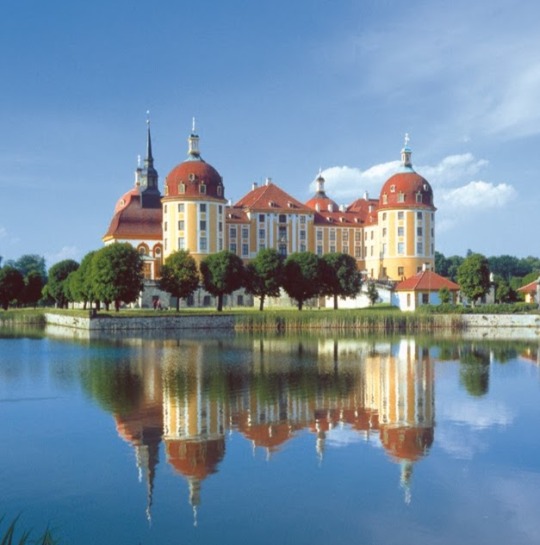
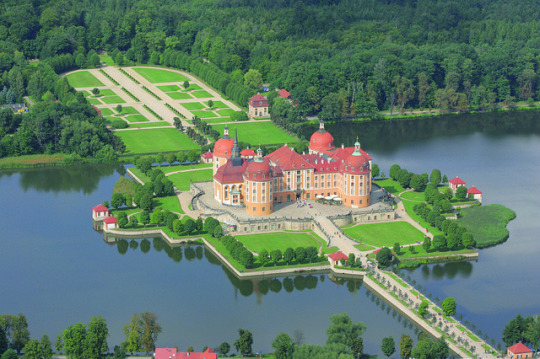
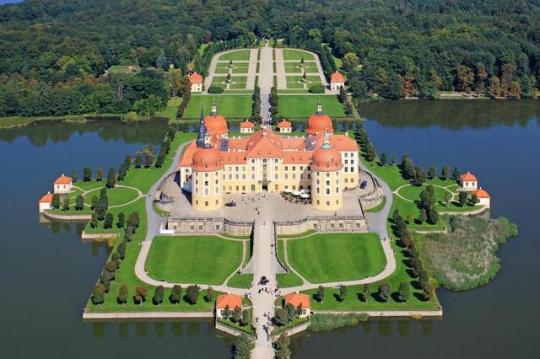
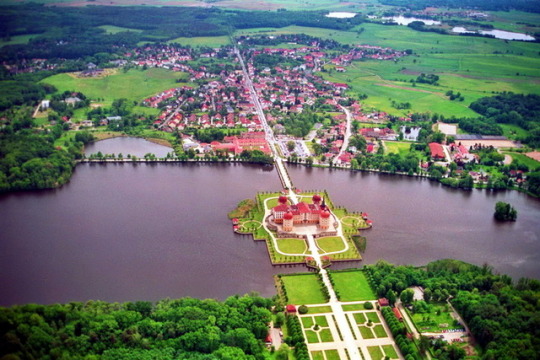
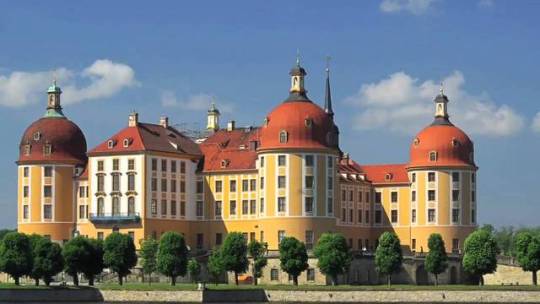
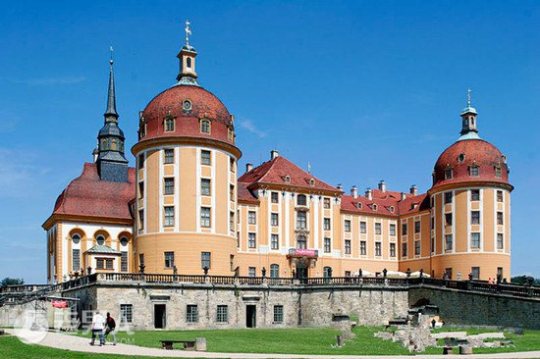
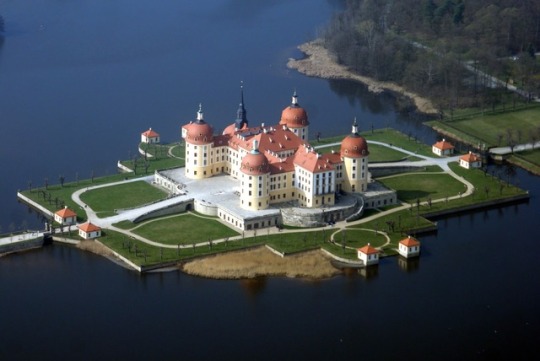
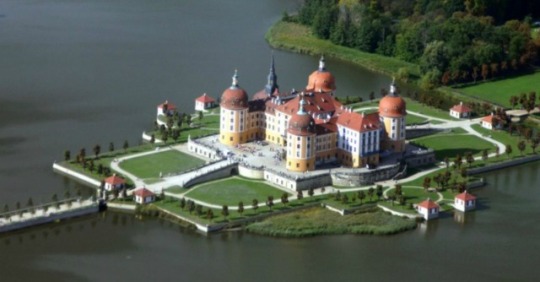
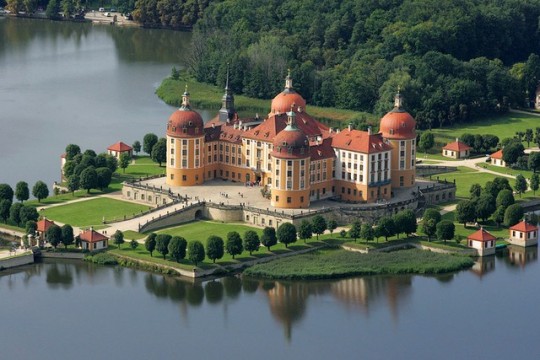
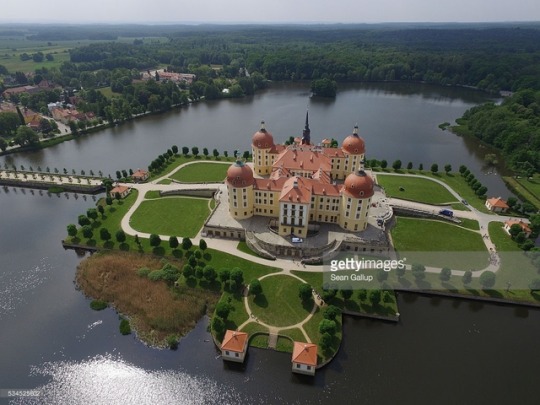
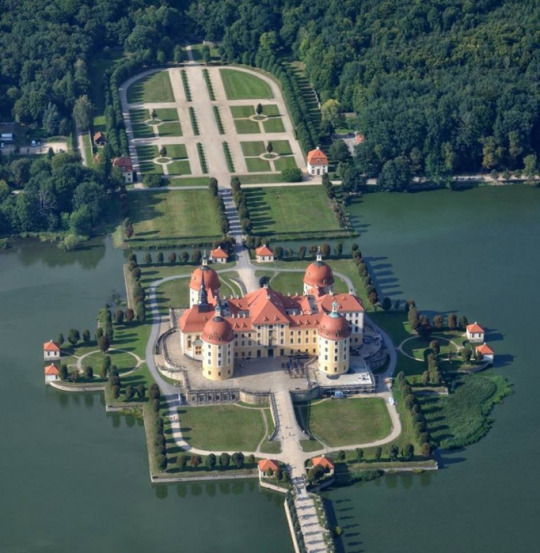
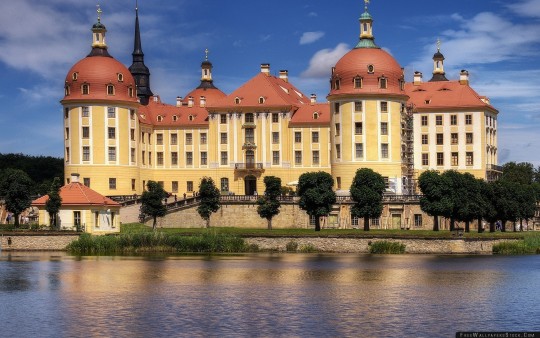
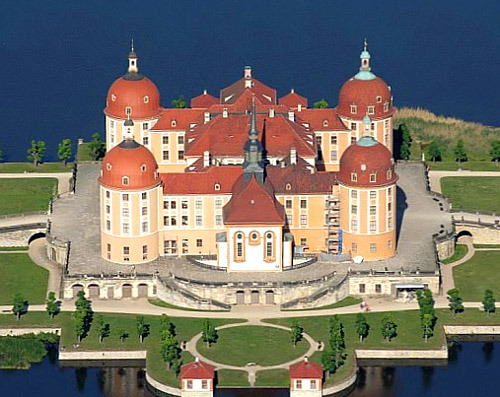
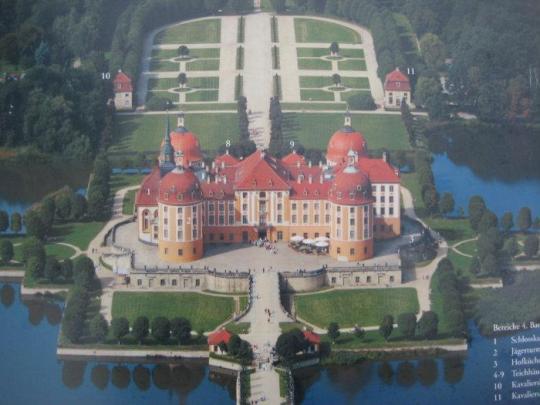
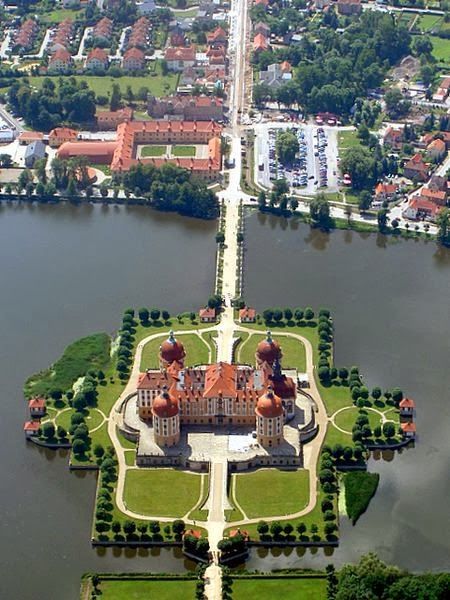
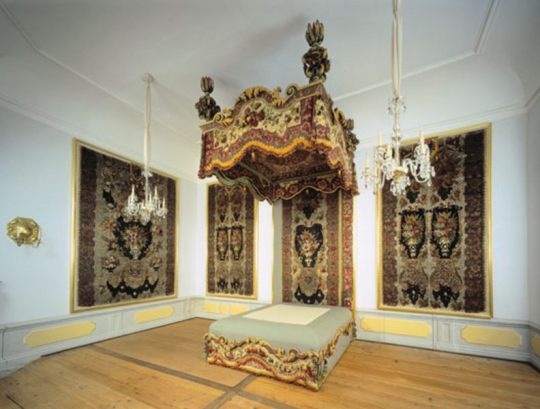
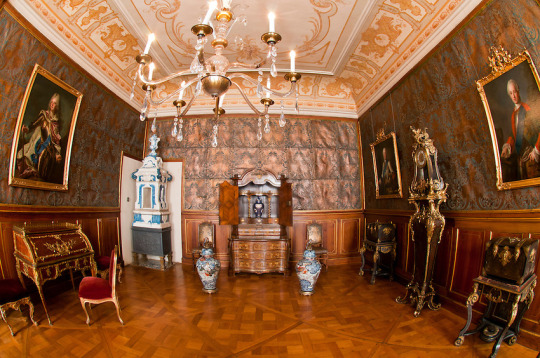
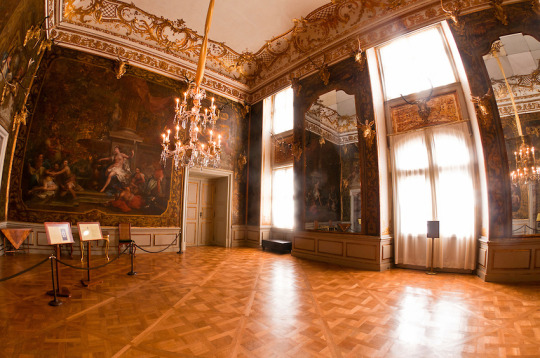
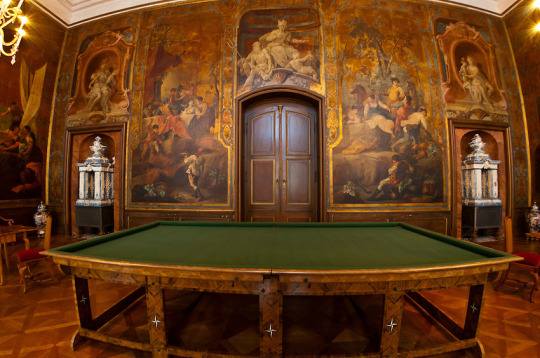
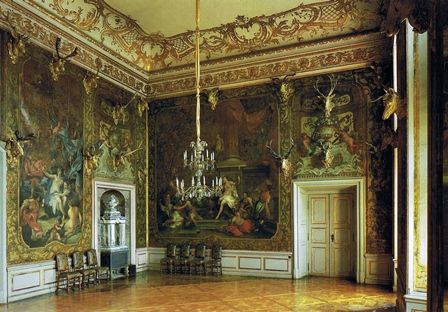
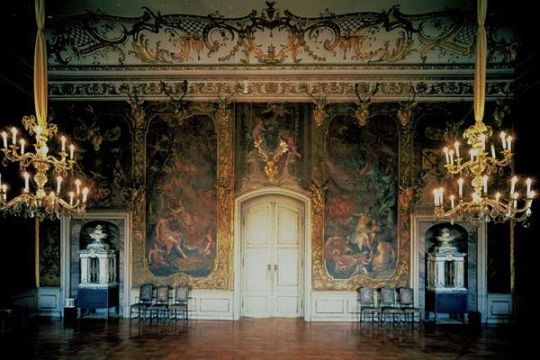
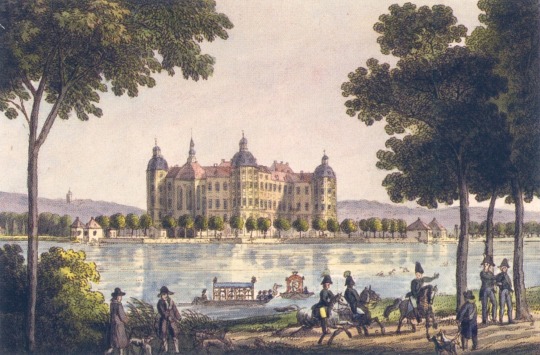
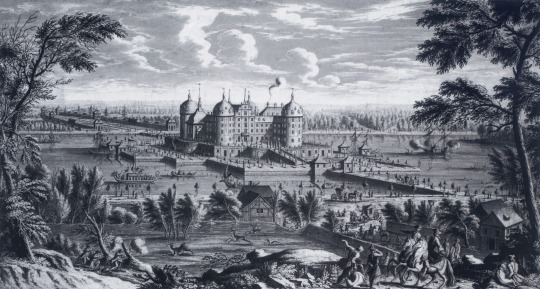
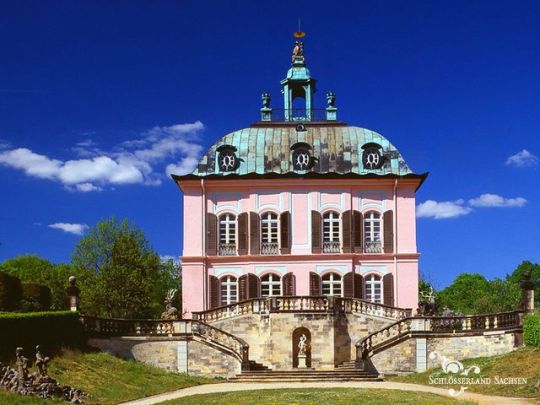
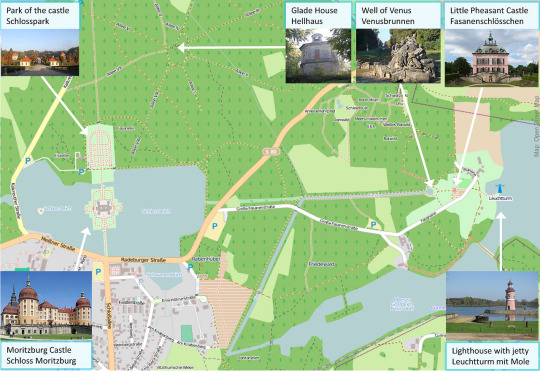
Moritzburg Castle
Moritzburg Castle (German: Schloss Moritzburg) or Moritzburg Palace is a Baroque palace in Moritzburg, in the German state of Saxony, about 13 kilometres (8.1 mi) northwest of the Saxon capital, Dresden. The castle has four round towers and lies on a symmetrical artificial island. It is named after Duke Moritz of Saxony, who had a hunting lodge built there between 1542 and 1546. The surrounding woodlands and lakes have been a favourite hunting area of the electors and kings of Saxony.
The original castle, built from 1542–1546, was a hunting lodge for Moritz of Saxony, then Duke of Saxony. Elector John George II of Saxony had the lodge extended; the chapel was added between 1661 and 1671. Designed by his architect, Wolf Caspar von Klengel, the chapel is an example of early Baroque architecture.
The chapel was consecrated in a Catholic rite in 1697, after the grandson of John George II, Elector Augustus II the Strong, converted to Catholicism in order to secure his election as King of Poland. Between 1723 and 1733, Augustus had the castle remodelled as a country seat by architects Matthäus Daniel Pöppelmann and Zacharias Longuelune, adding a formal park, several ponds and a game preserve.
The surroundings of the castle were further developed by Elector Frederick Augustus III of Saxony, a greatgrandson of Augustus II the Strong, at the end of the 18th century. The Little Pheasant Castle (Fasanenschlösschen) was built between 1770 and 1776. The grounds were extended to include a building for the storage of bird nets, the large Well of Venus, living quarters for Count Camillo Marcolini and a maritime setting on the Great Lake complete with a miniature harbour with jetty and lighthouse.
Prince Ernst Heinrich of Saxony, who lived in the castle between 1933 and 1945, was the last resident of the House of Wettin. He was dispossessed in 1945 by the postwar Soviet administration.
The interior of the castle is furnished with examples of opulent baroque decor from the time of Augustus the Strong. The walls are covered in 17th century gold-gilded leather. Many rooms' furnishings are dedicated to courtly hunting.
The collection of red deer antlers is one of the most important of its kind. The castle's largest collection of antlers is shown in the Speisesaal ("dining room"). Most of its 71 trophies are between 270 and 400 years old; they were purchased or acquired as presents. Among them is the heaviest red deer antler in the world, weighing 19.8 kilograms (44 lb) and spanning almost 2 metres (6.6 ft). In the Monströsensaal ("monstrosity room"), there are 39 contorted antlers. One specimen, a 66-point red deer antler is from an animal killed by Elector Frederick III of Brandenburg in 1696.
In 1723, Augustus the Strong acquired a four-poster bed for his Japanese palace. It had approximately a million peacock, pheasant, guinea hen and duck feathers woven into the canvas. Rather than gluing or tying the feathers onto the canvas, they were woven in as weft. Upon acquisition, Augustus had the curtains removed and turned into wall hangings, inspiring the room's name, Federzimmer, or "feather room". This ensemble was moved to Schloss Moritzburg in 1830. Following an extensive 19-year restoration, the bed and wall hangings have been on view again since 2003.
Examples of Chinese, Japanese and Meissen porcelain are shown in the historical Porzellanquartier ("porcelain quarter"). This exhibition displays porcelain depicting hunting, exotic and mythological motifs as well as animal figurines that are relating to Moritzburg’s original determination as a hunting lodge.
The apartments contain examples of opulence in the lacquered and ornate furniture, such as the Augsburg-made silver furniture styled after Louis XIV's silver furniture at Versailles. There are also engraved and inlaid weapons for hunting. The Billiardsaal ("billiards hall"), named after a former billiard table in it, contains monumental paintings on leather by Louis de Silvestre. Eleven rooms are decorated with painted leather wallpaper from the 17th century.
A collection of royal carriages is shown in the entrance hall.
Was originally intended to be a hunting lodge for Moritz of Saxony, then Duke of Saxony. Elector John George II of Saxony had the lodge extended; the chapel was added in 1661 and was designed by his architect, Wolf Caspar von Klengels. The chapel was consecrated in a Catholic rite in 1697, after the grandson of John George II, Elector Augustus II the Strong, converted to Catholicism in order to secure his election as King of Poland. The surroundings of the castle were further developed by Elector Frederick Augustus III of Saxony, a great-grandson of Augustus II the Strong, at the end of the 18th century. The grounds were later extended to include living quarters for Count Camillo Marcolini and a maritime setting on the Great Lake complete with a miniature harbor with a jetty and lighthouse was included. Prince Ernst Heinrich of Saxony, who lived in the castle between 1933 and 1945, was the last resident of the House of Wettin to live in this majestic "pièce de résistance" of a home.
youtube
2 notes
·
View notes
Photo

Marienburg Castle is a Gothic revival castle near Hanover in Lower Saxony, Germany. The castle was built between 1858 and 1867 as a birthday present by King George V of Hanover (reigned 1851–1866) to his wife, Marie of Saxe-Altenburg. Between 1714 and 1837 there had been virtually no royal court in Hanover as the House of Hanover had ruled the kingdoms of Hanover and Britain by personal union, and so the Castle was also built to serve as a suitable seat for the House of Hanover in Germany.
The castle is currently owned by Prince Ernst August of Hanover, after his father signed it over to him, together with all other royal properties at Hanover and Gmunden. The castle houses the property management offices of the Royal House of Hanover and serves as its official seat. Parts of it are open to the public, such as the castle museum, the Queens Library, the restaurant, the chapel, and can be booked as an event location for weddings, receptions, concerts, etc.
69 notes
·
View notes
Text
who: royal degrees of separation
The imperial, royal, princely and noble families of Europe have been intermarrying for thousands of years. This practice continues to this day, though not as frequently as in times past.
Karolina Augusta I of Mecklenburg is related to all current reigning and most non-reigning houses in Europe. Due to continual intermarriage, she is related to several families through various bloodlines. The lineage connecting her to these houses will be documented here. This is not an exhaustive list.
The closest relation is listed first, followed by any other notable shared ancestors.
REIGNING HOUSES OF EUROPE
Belgium
Karolina Augusta I and Philippe of the Belgians are fourth cousins as descendants of King Christian IX of Denmark and his wife Louise of Hesse-Kassel.
Karolina Augusta and Elisabeth, Duchess of Brabant are fourth cousins once removed.
Karolina Augusta and Philippe are also descendants of Maximilian I Joseph of Bavaria and his second wife Caroline of Baden.
Denmark
Karolina Augusta I and Margrethe II are second cousins once removed as descendants of Friedrich Franz III of Mecklenburg-Schwerin and his wife Grand Duchess Anastasia Mikhailovna of Russia.
Karolina Augusta and Crown Prince Frederik are third cousins.
Karolina Augusta and Margrethe are also descendants of Queen Victoria of the United Kingdom, and of King Christian IX of Denmark.
Liechtenstein
Karolina Augusta I and Hans-Adam II are fourth cousins twice removed as descendants of Maximilian I Joseph of Bavaria and his second wife Caroline of Baden.
Karolina Augusta and Hereditary Prince Alois are fifth cousins once removed.
Luxembourg
Karolina Augusta I and Henri of Luxembourg are fourth cousins as descendants of King Christian IX of Denmark and his wife Louise of Hesse-Kassel.
Karolina Augusta and Hereditary Grand Duke Guillaume are fourth cousins once removed.
Karolina Augusta and Henri are also descendants of Maximilian I Joseph of Bavaria and his wife Caroline of Baden.
Monaco
Karolina Augusta I and Albert II are fifth cousins as descendants of Florestan I of Monaco and his wife Maria Caroline Gibert de Lametz.
Karolina Augusta and Hereditary Prince Jacques are fifth cousins once removed.
The Netherlands
Karolina Augusta I and Willem-Alexander are third cousins once removed as descendants of Friedrich Franz II of Mecklenburg-Schwerin and his third wife Marie of Schwarzburg-Rudolstadt.
Karolina Augusta and Catharina-Amalia, Princess of Orange, are fourth cousins.
Karolina Augusta and Willem-Alexander are also descendants of George Victor, Prince of Waldeck and Pyrmont and his first wife Princess Helene of Nassau.
Norway
Karolina Augusta I and Harald V of Norway are third cousins once removed as descendants of King Christian IX of Denmark and his wife Louise of Hesse-Kassel.
Karolina August and Crown Prince Haakon are fourth cousins.
Karolina Augusta and Harald are also descendants of Queen Victoria of the United Kingdom and her husband Albert of Saxe-Coburg and Gotha.
Spain
Karolina Augusta I and Felipe VI of Spain are third cousins as descendants of Ernst August, Crown Prince of Hanover and his wife Thyra of Denmark.
Karolina Augusta and Leonor, Princess of Asturias are third cousins once removed.
Karolina Augusta and Felipe are also descendants of Queen Victoria of the United Kingdom and her husband Albert of Saxe-Coburg and Gotha.
Sweden
Karolina Augusta I and Carl XVI Gustaf of Sweden are third cousins twice removed as descendants of Queen Victoria of the United Kingdom and her husband Albert of Saxe-Coburg and Gotha.
Karolina Augusta and Crown Princess Victoria are fourth cousins once removed.
Karolina Augusta and Carl XVI Gustaf are also descendants of George Victor, Prince of Waldeck and Pyrmont and his first wife Princess Helene of Nassau.
The United Kingdom
Karolina Augusta I and Elizabeth II of the United Kingdom are third cousins once removed as descendants of King Christian IX of Denmark and his wife Louise of Hesse-Kassel.
Karolina Augusta I and Prince Philip, Duke of Edinburgh are second cousins twice removed as descendants of King Christian IX of Denmark and his wife Louise of Hesse-Kassel.
Karolina Augusta I and Charles, Prince of Wales are third cousins once removed through his father’s descent of King Christian IX of Denmark and his wife Louise of Hesse-Kassel.
Karolina Augusta is fourth cousins to the grandchildren of Prince Philip, Duke of Edinburgh.
Karolina Augusta and Elizabeth, and her husband, are also descendants of Queen Victoria of the United Kingdom and her husband Albert of Saxe-Coburg and Gotha.
Karolina Augusta is also second cousins once removed to The Duke of Kent, Princess Alexandra of Kent, and Prince Michael of Kent as descendants of Grand Duke Vladimir Alexandrovich of Russia and his wife Duchess Marie of Mecklenburg-Schwerin.

NON-REIGNING HOUSES OF EUROPE
Austria-Hungary
Karolina Augusta I and Karl von Habsburg are fourth cousins once removed as descendants of King John of Saxony and his wife Amalie Auguste of Bavaria.
Karolina Augusta and Ferdinand Zvonimir are fifth cousins.
Karolina Augusta and Karl are also descendants of Ernst I, Prince of Hohenlohe-Langenburg and his wife Princess Feodora of Leiningen.
Baden (German Empire)
Karolina Augusta I and Max, Margrave of Baden second cousins once removed as descendants of Ernst August, Crown Prince of Hanover and his wife Thyra of Denmark.
Karolina Augusta I and Hereditary Prince Bernhard are third cousins.
Karolina Augusta I and Max are also descendants of Queen Victoria of the United Kingdom and her husband Albert of Saxe-Coburg and Gotha.
Bulgaria
Karolina Augusta I and Simeon II of Bulgaria are fourth cousins once removed as descendants of King John of Saxony and his wife Amalie Auguste of Bavaria.
Karolina Augusta and Boris, Prince of Turnovo are fifth cousins once removed.
Karolina Augusta and Simeon are also descendants of Francis, Duke of Saxe-Coburg-Saalfeld and his second wife Countess Augusta Reuss of Ebersdorf.
Greece
Karolina Augusta I and Constantine II of Greece are second cousins once removed as descendants of Ernst August, Crown Prince of Hanover and his wife Thyra of Denmark.
Karolina Augusta and Crown Prince Pavlos are third cousins.
Karolina Augusta and Constantine are also descendants of King Christian IX of Denmark, and of Queen Victoria of the United Kingdom.
Karolina Augusta and Crown Prince Pavlos are also descendants of Friedrich Franz III of Mecklenburg-Schwerin and his wife Grand Duchess Anastasia Mikhailovna of Russia.
Hannover (German Empire)
Karolina Augusta I and Ernst August V, Prince of Hannover are second cousins once removed as descendants of Ernst August, Crown Prince of Hannover and his wife Princess Thyra of Denmark.
Karolina Augusta and Ernst August, Hereditary Prince of Hannover are third cousins.
Karolina Augusta and Ernst August are also descendants of Queen Victoria of the United Kingdom and her husband Albert of Saxe-Coburg and Gotha.
Hesse (German Empire)
Karolina Augusta I and Donatus, Landgrave of Hesse are fourth cousins once removed as descendants of Queen Victoria of the United Kingdom and her husband Albert of Saxe-Coburg and Gotha.
Karolina Augusta I and Moritz, Hereditary Prince of Hesse are fifth cousins.
Hohenlohe-Langenburg (German Empire)
Karolina Augusta I and Philipp, Prince of Hohenlohe-Langenburg are third cousins once removed as descendants of Alfred, Duke of Saxe-Coburg and Gotha and his wife Grand Duchess Maria Alexandrovna of Russia.
Karolina Augusta and Hereditary Prince Max Leopold are fourth cousins.
Hohenzollern (German Empire)
Karolina Augusta I and Karl Friedrich, Prince of Hohenzollern are first cousins once removed as descendants of Karl, 6th Prince of Leiningen and his wife Grand Duchess Maria Kirillovna of Russia.
Karolina Augusta and Hereditary Prince Alexander are second cousins.
Leiningen (German Empire)
Karolina Augusta I is a niece of Andreas, 8th Prince of Leiningen.
Karolina Augusta I and Hereditary Prince Ferdinand are first cousins.
Mecklenburg-Strelitz (German Empire)
Karolina Augusta I and Borwin, Duke of Mecklenburg-Strelitz are fourth cousins once removed as descendants of John of Saxony and his wife Princess Amalia of Bavaria.
Karolina Augusta I and Hereditary Duke Alexander are fifth cousins.
Karolina Augusta I and Borwin, Duke of Mecklenburg-Strelitz’s most recent patrilineal ancestor is Adolf Friedrich I, Duke of Mecklenburg, who died in 1658.
Oldenburg (German Empire)
Karolina Augusta I and Christian, Duke of Oldenburg are first cousins once removed as descendants of Nikolaus, Hereditary Duke of Oldenburg and his wife Helen of Waldeck and Pyrmont.
Karolina Augusta I and Hereditary Duke Alexander are second cousins.
Portugal
Karolina Augusta I and Duarte Pio, Duke of Braganza are fourth cousins twice removed as descendants of Karl Ludwig, Prince of Hohenlohe-Langenburg and his wife Countess Amalie Henriette of Solms-Baruth.
Karolina Augusta and Afonso, Prince of Beira are fifth cousins once removed.
Prussia (German Empire)
Karolina Augusta I and Georg Friedrich, Prince of Prussia are second cousins once removed as descendants of Kirill Vladimirovich, Grand Duke of Russia and his wife Princess Victoria Melita of Saxe-Coburg and Gotha.
Karolina Augusta and Prince Carl Friedrich are third cousins.
Karolina Augusta and Georg Friedrich are also descendants of Friedrich Franz III, Grand Duke of Mecklenburg-Schwerin and his wife Grand Duchess Anastasia Mikhailovna of Russia.
Romania
Karolina Augusta I and King Michael I of Romania are second cousins twice removed as descendants of Alfred, Duke of Saxe-Coburg and Gotha and his wife Grand Duchess Maria Alexandrovna of Russia.
Karolina Augusta and Crown Princess Margareta are third cousins once removed.
Karolina Augusta and Michael are also descendants of King Christian IX of Denmark and his wife Louise of Hesse-Kassel.
Russia (Disputed)
Karolina Augusta I and Maria Vladimirovna are first cousins twice removed as descendants of Kirill Vladimirovich, Grand Duke of Russia and his wife Princess Victoria Melita of Saxe-Coburg and Gotha.
Karolina Augusta and Grand Duke George Mikhailovich are second cousins once removed.
Saxe-Coburg and Gotha (German Empire)
Karolina Augusta I and Andreas, Prince of Saxe-Coburg and Gotha are third cousins twice removed descendants of Queen Victoria of the United Kingdom and her husband Albert of Saxe-Coburg and Gotha.
Karolina Augusta and Hubertus, Hereditary Prince of Saxe-Coburg and Gotha are fourth cousins once removed.
Schleswig-Holstein (German Empire)
Karolina Augusta I and Christoph, Prince of Schleswig-Holstein are second cousins once removed as descendants of Friedrich August II, Grand Duke of Oldenburg and his second wife Duchess Elisabeth Alexandrine of Mecklenburg-Schwerin.
Karolina Augusta and Hereditary Prince Friedrich Ferdinand are third cousins.
Karolina Augusta and Christoph are also descendants of Alfred, Duke of Saxe-Coburg and Gotha and his wife Grand Duchess Maria Alexandrovna of Russia.
Waldeck and Pyrmont (German Empire)
Karolina Augusta I and Wittekind, Prince of Waldeck and Pyrmont are first cousins twice removed as descendants of Friedrich August II, Grand Duke of Oldenburg and his second wife Duchess Elisabeth Alexandrine of Mecklenburg-Schwerin.
Karolina Augusta and Hereditary Prince Carl-Anton are second cousins once removed.
Wied (German Empire)
Karolina Augusta I and Maximilian, 9th Prince of Wied are third cousins as descendants of Friedrich August II, Grand Duke of Oldenburg and his second wife Duchess Elisabeth Alexandrine of Mecklenburg-Schwerin.
Yugoslavia/Serbia
Karolina Augusta I and Alexander, Crown Prince of Yugoslavia are third cousins once removed as descendants of Alfred, Duke of Saxe-Coburg and Gotha and his wife Grand Duchess Maria Alexandrovna of Russia.
Karolina August and Hereditary Prince Peter are fourth cousins.
10 notes
·
View notes
Photo

"The Children of Prince (future King) John of Saxony, and his wife, Amalie Auguste of Bavaria, 1834"
Left to Right are: George (2), Elisabeth (4), Maria (7), Ernst (3), and Albert (6).
The couple would have 4 more children together, all daughters: Sidonia was born the year this portrait was done, then two years later came Anna. Four years after her was Margarete, and five years after her their last child, Sophie, was born.
#george of saxony#elisabeth of saxony#ernst of saxony#Albert of saxony#maria of saxony#long live the queue#house of wettin#saxony
14 notes
·
View notes
Link
Prince Ludwig Rudolph of Hanover (Ludwig Rudolph Georg Wilhelm Philipp Friedrich Wolrad Maximilian Prinz von Hannover; 21 November 1955 – 29 November 1988) was a member of the House of Hanover and a music producer.
…
Ludwig Rudolph was born in Hanover, Lower Saxony, Germany, the third child and second son of Ernst August, Prince of Hanover, Hereditary Prince of Brunswick (1914–1987) and his wife Princess Ortrud of Schleswig-Holstein-Sonderburg-Glücksburg (1925–1980). Ludwig Rudolph was a great-great-great-great-grandson of George III of the United Kingdom and a great-grandson of Wilhelm II, German Emperor.
Ludwig Rudolph had trained to become a music producer in Los Angeles and London.
0 notes
Text
JS Bach – Toccata and Fugue in D Minor (1705)
Toccata and Fugue in D Minor – Written by JS Bach Performed by Hannes Kästner
Hannes Kästner Album: Bach, J.S.: Organ Music – Preludes and Fugues – Toccata and Fugue in D Minor – Chorales Preludes.
The original song was written between 1703 and 1707, but no-one knows exactly when.
This album was released in 1988 and it’s also available on iTunes : https://itunes.apple.com/ca/album/bac…
This could be one of the scariest tunes written of all time. This guy had thirteen children and half of them died. I can’t imagine the suffering & pain him and his wife went through. But, he obviously channeled it all through music.
There must have been a lot of praying with the high rates of infanticide and child deaths. Smallpox, Polio and measles seemed to have been more virulent then than now. Typhus, spread by lice and fleas, and typhoid, waterborne, killed many. Tuberculosis was less common than it was to become.
From the 1680s to 1789, Germany comprised many small territories which were parts of the Holy Roman Empire of the German Nation. Prussia finally emerged as dominant. Meanwhile, the states developed a classical culture that found its greatest expression in the Enlightenment, with world class leaders such as philosophers Leibniz and Kant, writers such as Goethe and Schiller, and musicians Bach and Beethoven.
Bach’s Toccata and Fugue in D minor is one of the most famous pieces of Baroque organ music ever written – with a particularly iconic opening
Bach probably composed the Toccata and Fugue in D minor, BWV 565, between 1703-7, but no one is sure of the exact date. It’s important to remember the BWV catalogue number as well – there are actually three pieces of organ music written by Bach with the same name! One of these Toccata and Fugue sets, BWV 538, is even in D minor, but it’s known as the ‘Dorian’, which distinguishes it from Bach’s more famous organ music.
Many people will be familiar with its three dramatic opening flourishes followed by the low, growling pedal note underneath a huge, fortissimo rolling chord. The Toccata is rhapsodic – like an improvisation – and has many features that are unusual for an organ work of its time. The Fugue, too, has elements that are uncharacteristic of Bach.
In fact, there are strong reasons to suggest that Bach’s celebrated Toccata and Fugue was not originally in D minor, nor written for the organ. It might have been written for violin or harpsichord, and some scholars believe it’s too crude a piece to have been written by Bach at all! The earliest score contains many un-Bach-like dynamics and markings, in a copy made by Johann Ringk (1717-78), who was a student of one of Bach’s students. No original manuscript survives, so perhaps we’ll never clear up the mystery.
A magnificent baroque-era composer, Johann Sebastian Bach is revered through the ages for his work’s musical complexities and stylistic innovations.
Synopsis
Born on March 31, 1685 (N.S.), in Eisenach, Thuringia, Germany, Johann Sebastian Bach had a prestigious musical lineage and took on various organist positions during the early 18th century, creating famous compositions like “Toccata and Fugue in D minor.” Some of his best-known compositions are the “Mass in B Minor,” the “Brandenburg Concertos” and “The Well-Tempered Clavier.” Bach died in Leipzig, Germany, on July 28, 1750. Today, he is considered one of the greatest Western composers of all time.
Childhood
Born in Eisenach, Thuringia, Germany, on March 31, 1685 (N.S.) / March 21, 1685 (O.S.), Johann Sebastian Bach came from a family of musicians, stretching back several generations. His father, Johann Ambrosius, worked as the town musician in Eisenach, and it is believed that he taught young Johann to play the violin.
At the age of seven, Bach went to school where he received religious instruction and studied Latin and other subjects. His Lutheran faith would influence his later musical works. By the time he turned 10, Bach found himself an orphan after the death of both of his parents. His older brother Johann Christoph, a church organist in Ohrdruf, took him in. Johann Christoph provided some further musical instruction for his younger brother and enrolled him in a local school. Bach stayed with his brother’s family until he was 15.
Bach had a beautiful soprano singing voice, which helped him land a place at a school in Lüneburg. Sometime after his arrival, his voice changed and Bach switched to playing the violin and the harpsichord. Bach was greatly influenced by a local organist named George Böhm. In 1703, he landed his first job as a musician at the court of Duke Johann Ernst in Weimar. There he was a jack-of-all-trades, serving as a violinist and at times, filling in for the official organist.
Early Career
Bach had a growing reputation as a great performer, and it was his great technical skill that landed him the position of organist at the New Church in Arnstadt. He was responsible for providing music for religious services and special events as well as giving music instruction. An independent and sometimes arrogant young man, Bach did not get along well with his students and was scolded by church officials for not rehearsing them frequently enough.
Bach did not help his situation when he disappeared for several months in 1705. While he only officially received a few weeks’ leave from the church, he traveled to Lübeck to hear famed organist Dietrich Buxtehude and extended his stay without informing anyone back in Arnstadt.
In 1707, Bach was glad to leave Arnstadt for an organist position at the Church of St. Blaise in Mühlhausen. This move, however, did not turn out as well as he had planned. Bach’s musical style clashed with the church’s pastor. Bach created complex arrangements and had a fondness for weaving together different melodic lines. His pastor believed that church music needed to be simple. One of Bach’s most famous works from this time is the cantata “Gottes Zeit ist die allerbeste Zeit,” also known as “Actus Tragicus.”
Working for Royalty
After a year in Mühlhausen, Bach won the post of organist at the court of the Duke Wilhelm Ernst in Weimar. He wrote many church cantatas and some of his best compositions for the organ while working for the duke. During his time at Weimar, Bach wrote “Toccata and Fugue in D Minor,” one of his most popular pieces for the organ. He also composed the cantata “Herz und Mund und Tat,” or Heart and Mouth and Deed. One section of this cantata, called “Jesu, Joy of Man’s Desiring” in English, is especially famous.
In 1717, Bach accepted a position with Prince Leopold of Anhalt-Cöthen. But Duke Wilhelm Ernst had no interest in letting Bach go and even imprisoned him for several weeks when he tried to leave. In early December, Bach was released and allowed to go to Cöthen. Prince Leopold had a passion for music. He played the violin and often bought musical scores while traveling abroad.
While at Cöthen, Bach devoted much of his time to instrumental music, composing concertos for orchestras, dance suites and sonatas for multiple instruments. He also wrote pieces for solo instruments, including some of his finest violin works. His secular compositions still reflected his deep commitment to his faith with Bach often writing the initials I.N.J. for the Latin In Nomine Jesu, or “in the name of Jesus,” on his sheet music.
In tribute to the Duke of Brandenburg, Bach created a series of orchestra concertos, which became known as the “Brandenburg Concertos,” in 1721. These concertos are considered to be some of Bach’s greatest works. That same year, Prince Leopold got married, and his new bride discouraged the prince’s interest in music. Bach completed the first book of “The Well-Tempered Clavier” around this time. With students in mind, he put together this collection of keyboard pieces to help them learn certain techniques and methods. Bach had to turn his attentions to finding work when the prince dissolved his orchestra in 1723.
Later Works in Leipzig
After auditioning for a new position in Leipzig, Bach signed a contract to become the new organist and teacher at St. Thomas Church. He was required to teach at the Thomas School as a part of his position as well. With new music needed for services each week, Bach threw himself into writing cantatas. The “Christmas Oratorio,” for example, is a series of six cantatas that reflect on the holiday.
Bach also created musical interpretations of the Bible using choruses, arias and recitatives. These works are referred to as his “Passions,” the most famous of which is “Passion According to St. Matthew.” This musical composition, written in 1727 or 1729, tells the story of chapters 26 and 27 of the Gospel of Matthew. The piece was performed as part of a Good Friday service.
One of his later religious masterworks is “Mass in B minor.” He had developed sections of it, known as Kyrie and Gloria, in 1733, which were presented to the Elector of Saxony. Bach did not finish the composition, a musical version of a traditional Latin mass, until 1749. The complete work was not performed during his lifetime.
Final Years
By 1740, Bach was struggling with his eyesight, but he continued to work despite his vision problems. He was even well enough to travel and perform, visiting Frederick the Great, the king of Prussia in 1747. He played for the king, making up a new composition on the spot. Back in Leipzig, Bach refined the piece and gave Frederick a set of fugues called “Musical Offering.”
In 1749, Bach started a new composition called “The Art of Fugue,” but he did not complete it. He tried to fix his failing sight by having surgery the following year, but the operation ended up leaving him completely blind. Later that year, Bach suffered a stroke. He died in Leipzig on July 28, 1750.
During his lifetime, Bach was better known as an organist than a composer. Few of his works were even published during his lifetime. Still Bach’s musical compositions were admired by those who followed in his footsteps, including Amadeus Mozart and Ludwig van Beethoven. His reputation received a substantial boost in 1829 when German composer Felix Mendelssohn reintroduced Bach’s “Passion According to St. Matthew.”
Musically, Bach was a master at invoking and maintaining different emotions. He was an expert storyteller as well, often using melody to suggest actions or events. In his works, Bach drew from different music styles from across Europe, including French and Italian. He used counterpoint, the playing of multiple melodies simultaneously, and fugue, the repetition of a melody with slight variations, to create richly detailed compositions. He is considered to be the best composer of the Baroque era, and one of the most important figures in classical music in general.
Personal Life
Little personal correspondence has survived to provide a full picture of Bach as a person. But the records do shed some light on his character. Bach was devoted to his family. In 1706, he married his cousin Maria Barbara Bach. The couple had seven children together, some of whom died as infants. Maria died in 1720 while Bach was traveling with Prince Leopold. The following year, Bach married a singer named Anna Magdalena Wülcken. They had thirteen children, more than half of them died as children.
Bach clearly shared his love of music with his children. From his first marriage, Wilhelm Friedemann Bach and Carl Philipp Emanuel Bach became composers and musicians. Johann Christoph Friedrich Bach and Johann Christian Bach, sons from his second marriage, also enjoyed musical success.
The post JS Bach – Toccata and Fugue in D Minor (1705) appeared first on Hip Hop World Music.
from Hip Hop World Music https://hiphopworldmusic.com/js-bach-toccata-and-fugue-in-d-minor-1705/?utm_source=rss&utm_medium=rss&utm_campaign=js-bach-toccata-and-fugue-in-d-minor-1705 from Hip Hop World Music https://hiphopworldmusic.tumblr.com/post/188704517798
0 notes
Text
Francisco de Aefferden, Life of the very Serene Prince Elector Philip William Count Palatine of the Rhine, 1692
Page 7: And on the occasion of such a superior motive, well could the advised be deviated from, against peregrinations in foreign regions given by the Elector of Bavaria Maximilian, who left at testament prohibiting his eldest son, Ferdinand Maria, from going outside the boundaries of the State, to prevent the risk of his losing his goods, and his virtues.
Page 72: It is not now, this experience of God allowing his servants to experience mortifications among the affections, to perfect them at the same time with one hand, and to encourage them with the other. And our Prince Elector thus would be able to confess, because the good fortunes, and the disgraces in his life, were either paired, or were in competition.
Page 130: Jacob Almawnsor was saying that the Princes lacking beneficence, it was only in respiration and movements that they could be distinguished from the dead; because having forgotten an attribute so proper in the Greats, they had not left an imprint of their liberality upon their lives, which can be acquired in memories or memoirs. And if the Patriarch Jacob, such a singular Builder of the Sacred, eternalized his name in the marbles: Erexit titular lapideum, displaying even now the living actions of the magnificent one, underneath the ashes of the burial: also the very Serene Elector Philip William, even when his presence is now lacking, still lives in the memory of his benefits as we already said in other places, and are now saying here.
Page 242: Ludwig 4, the Faithful, Landgrave of Darmstadt. Born in the year 1577, had dominion of Marburg. He founded the Giessense Academy; he acquired the right of Majority for the Family of Darmstadt, with precedence to that of Castell. he died in the year 1626. He married Magdalena, daughter of John George, Elector of Brandenburg, who was born in the year 1582. She was married in 1598 and died in 1616.
George II, Landgrave of Hesse-Darmstadt, was born on March 17, 1600, and died in 1671, on June 22. He married Sofia Leonor, daughter of John George, Elector of Saxony, who was born November 23, 1609, and they were married April 1, 1627, from which marriage was born on March 20, 1635, the very Serene Wife of his Electoral Highness.
Page 243: We have come to the Saxon Genealogy, which is a fourth of the Ascendents of Her Majesty the Queen our Lady, as we have shown, and we also say, that the antiquity of this illustrious House has as its first origin, as for the moderns, as for the Ancient Dukes and Saxon Electors of the Great Vilikindo, last King of Saxony, who was contemporaneous with the Emperor Charlemagne, at the beginning of the early ninth century: and because we do not rely on such ancient years, to measure this superior nobility, we leave them, without further memoir, than that already implied at other places in these genealogies. The dignity of the Saxon Electorate, and also that of Brandenburg, ended in the successors of Albert, also called the Bear, Marquess Elector of Brandenburg, Duke of Anhalt, and Court of Ascania, from whom are descended the Dukes of Saxe-Lausemburg, and of Anhalt, said Electoral Dignity continuing that way, from the year 1150 until that of 1423.
At that time, the Emperor Sigismund, at the death of Albert Octavius, and the last Elector of Saxony, through that line, not permitting this dignity to Henry V, Duke of Saxe-Lausemburg, gave it to Frederick the Warrior, Landgrave of Thuringia, and Marquess of Misnia….
Page 244: Maternal Ascendents of the Catholic Queen Our Lady in the House of Saxony. Frederick I, the Warrior, Elector I of Saxony, of the Marquesses of Misnia, died in the year 1438. He married Catherine, daughter of Henry, Duke of Brunswick, who died in 1442. Frederick II the Pacific, Elector II, born in the year 1411, and died in 1464. He married Margarita, daughter of Ernst Ferreo, Duke of Austria, in the year 1431, who died in 1486.
Page 245: August the Pious, Duke of Saxony, and Elector VIII, born in 1526 and died in 1586, married Anna, daughter of Christian III, King of Denmark, who was born in the years 1532, married in 1548 and died in 1585. Christian, Duke of Saxony, and Elector IX, born in the year 1560, and died in 1591, married Sophie, daughter of John George, Elector of Brandenburg, who was born in 1568, married in 1582, and died in 1622. John George, Duke of Saxony, and Elector XI, born March 5, 1585, and died October 8, 1656, married Magdalena Sibyl, daughter of Albert Frederick, Marquess of Brandenburg, Duke of Prussia, on July 1607, and she died in 1659. ……. Isabel Amelia Magdalena, Mother of the Queen Our Lady. The House of Meissen-Saxony, has an Emperor elect, a King elect of Bohemia, two Queens of Denmark, an Elector of Maguncia (Mainz), thirteen Electors of Saxony, and two Archbishops.
Page 248: The same links corresponded though other lines, because from the House of Palatine-Bavaria, Maximilian I, Elector of Bavaria, brother of the above said Empress Maria Anna, and of Magdalena, grandmother of the Queen our Lady, married Maria Anna, daughter of the Emperor Ferdinand II, who is the grandmother of the current Elector of Bavaria, Maximilian II, and he is married to Maria Antonia, daughter of the abovesaid Emperor Leopold, who was had from Margarita, daughter of Philip IV, King of Sapin, and Maria Anna her sister.
0 notes
Text



King Frederick Augustus III of Saxony surrounded by his six children, late 1900s.
#king frederick augustus iii of saxony#crown prince georg of saxony#prince friedrich christian of saxony#prince ernst heinrich of saxony#princess margarete karola of saxony#princess maria alix of saxony#princess anna of saxony#saxony#german royal#german royalty#1900s#late 1900s
15 notes
·
View notes
Photo

29.11.2018, Lower Saxony, Pattensen: Ernst August Hereditary Prince of Hanover during a press conference at Marienburg Castle. The dilapidated castle Marienburg owned by Ernst August of Hanover should go completely to the state of Lower Saxony for the symbolic amount of one euro,
photo: Rainer Droese, germany out !!!//DROESE_DROESE013129/Credit:Rainer Droese/SIPA/1812021350
0 notes
Photo

New Post has been published on http://www.lifehacker.guru/runaway-princess-bride-feudal-feud-three-insane-recent-royal-weddings/
A Runaway Princess Bride and Feudal Feud: Three Insane Recent Royal Weddings
The tantalizing royal-wedding tales you need to read to believe.
From left, by Benoit Tessier/AP/REX/Shutterstock, by Tim Rooke/REX/Shutterstock, from from People Picture/Jens Hartmann/REX/Shutterstock.
Each week in May, Vanity Fair will flash back to a different British royal wedding in the lead-up to Prince Harry and Meghan Markle’sMay 19 nuptials.
Sixty-five years ago, the idea of a British royal family member marrying a divorcée was so ludicrous—given the family’s association with the Church of England—that Queen Elizabeth II offered her heartsick younger sister a prickly ultimatum: Princess Margaret could marry Peter Townsend, but only if she forfeited her right to the throne for both herself and her children. Princess Margaret opted to keep her crown over the dashing group captain, avoiding a national scandal on par with her uncle’s decision to abdicate the throne for an American wife 17 years earlier. The fact that Queen Elizabeth has signed off on Prince Harry, her one-time-wild grandchild, marrying Meghan Markle—herself an American divorcée and television actress—is a testament to the monarch’s evolving moral attitude. And, at the moment, the British royal family—once teeming with affairs and controversy—is suddenly the picture of normalcy. Luckily for thrill-seeking royal-watchers, a few other palaces have picked up the slack in scandalous nuptials. Ahead, the most tantalizing of those tales.
Try Vanity Fair—3 months free.Join Now
Left, by Benoit Tessier/AP/REX/Shutterstock; Right, by Willi Schneider/REX/Shutterstock.
RUNAWAY PRINCESS BRIDE
Just three months after Prince William married Kate Middleton in a real-life fairy tale—complete with carriage and movie-star-beautiful bride and groom—there was another European wedding that seemed, on paper at least, to be a P.R. slam dunk. Prince Albert, Grace Kelly’s grandson, was set to marry Charlene Wittstock���a gorgeous South African swimmer who competed in the 2000 Sydney Olympics and looks to be a cross between Charlize Theron and Naomi Watts.But according to media reports, what should have been a dream wedding in 2011 turned out, for Wittstock, to be a nightmare.
Days before the wedding, it was reported that the future bride had attempted to flee Monaco after discovering that Albert, already the father of two illegitimate children, had fathered a third love child during their five-year courtship. According to French weekly L’Express, Wittstock did not just make one attempt at escaping the principality, but three. Alleged attempt one: Wittstock, who is 20 years younger than her groom, is said to have sought “refuge in the South African Embassy in May, while in France for a bridal-gown fitting.” Alleged attempt two is said to have taken place that same month during Monaco’s Grand Prix. Alleged attempt three was reportedly the closest she came to escaping—when she booked a one-way ticket to South Africa and nearly made it to the nearby airport in Nice, France, before being intercepted and stripped of her passport so that, according to a senior detective in Monaco, “the prince’s entourage could persuade her to stay.”
Though Charlene went through with the $55 million, three-day royal wedding, reporters and wedding guests noted the bride’s apparent wedding-day sadness. Charlene “was in tears throughout the wedding ceremony” according to ABC, who added that the bride reportedly recoiled when the groom attempted to kiss her. The Guardian noted that Charlene “emerged from the royal chapel where she laid her bouquet with top lip wobbling and a tear rolling down her cheek. While she dabbed the tears with a hankie, Prince Albert begged in a whisper, ‘Don’t cry, don’t cry.’” Even the impartial Associated Press reported that the bride and groom’s eyes were “mostly downcast” and that “tears flowed freely” down the princess’s face. LaineyGossip even nicknamed Charlene “Prisoner Bride” and reported that bride and groom spent their honeymoon “not only in separate beds or separate rooms, but in separate hotels altogether.”
The sadness does not end there, though. Wittstock is said to have demanded DNA tests from her groom—though, according to ABC, it is suggested that results would likely be withheld during the honeymoon in South Africa “for fears that Wittstock would flee while away from the constraints of her marriage in Monaco.”
A British historian told ABC, however, that fleeing Albert would be much harder during the honeymoon since he was officially her husband: “When they got her into that Catholic Church and got her married, they really trapped her so far as the Catholic Church is concerned. It would be very difficult now for her to get a divorce.”
The Palace long denied the rumors, telling one outlet, “None of this is true, and we think it comes from utter jealousy.” Albert, for his part, directly denied the rumors and threatened legal action—though he did seem to confirm that the couple spent their honeymoon in separate hotels . . . “for practical reasons.” The couple remains married and has two children.
Left, from People Picture/Willi Schneider/REX/Shutterstock; Right, from People Picture/Jens Hartmann/REX/Shutterstock.
DRAMA KING
Think a runaway royal bride is dramatic? Then meet Prince Ernst August of Hanover, the 64-year-old German royal and distant cousin of Queen Elizabeth II, who, days before his son’s 2017 wedding, renounced the nuptials over property—including several castles and forests (!)—he claimed his son owed him. A little colorful backstory about Prince Ernst August Sr. first—the head of the deposed royal House of Hanover was convicted in 2008 of assaulting a fellow German at a Kenyan nightclub who refused to turn down the music and shut off some “annoying lasers.” (In his defense, nightclub music is usually way too loud.) Ernst claimed that he had merely “slapped [the fellow German] across the face two times—left and right—saying: ‘One for the music, one for the light.’” But the victim claimed the prince had pounded him with a knuckleduster. More backstory though: Prince Ernst August has also been accused of flashing a Nazi salute, attacking a photographer, and “urinating outside the Turkish pavilion at the World’s Fair in Hanover.” (So maybe it wasn’t so bad that Ernst—the Jersey Shore cast member of the royal family and estranged husband of another royal, Princess Caroline of Monaco—couldn’t attend Ernst Jr.’s wedding?)
But back to the wedding. Ernst Sr. did not drop the bombshell until days before his son—also named Ernst August of Hanover—was due to marry Russian-born catsuit designer (seriously!) Ekaterina Malysheva. (In case you were wondering, Malysheva was inspired to launch her catsuit line after, according to her company’s official Web site, “a life-changing trip to Burning Man Festival.”) Ernst Sr. didn’t care that his son—a descendant of Queen Victoria and a distant heir to the British throne—was marrying a catsuit designer who had been to Burning Man. Ernst Sr. cared that his son wouldn’t return the Hanover properties he had deeded him in the mid-00s for murkily motivated tax purposes. The properties include the Marienburg Castle and forestland in Lower Saxony. (If we had $1 for every time we argued with a relative over who had the rights to the family forestland.)
In an interview with the German newspaper Handelsblatt, Ernst Sr. took his stand publicly, saying (via translation), “I am constrained to preserve the interests of the House of Hanover and the property, including cultural property, which has been its property for centuries . . . I continue to hope that my son will eventually think of the best interests of our family and yield. I am ready for discussion and reconciliation.”
Ernst Sr. did not attend the wedding—which looks to have been lovely. Malysheva wore an elegant Sandra Mansour gown constructed of Chantilly lace (no catsuit) and a tiara that belonged to Emperor Wilhelm II’s only daughter. The reception took place at Marienburg Castle, where the couple danced to Otis Redding’s “I’ve Been Loving You Too Long.”
By Tim Rooke/REX/Shutterstock.
REALITY-STAR ROYAL
Meghan Markle won’t be the first television star to marry into a royal family. In 2015, Sweden’s Prince Carl Philip raised a few eyebrows when he married Sofia Hellqvist, a tattooed former waitress who had appeared on the country’s reality show Paradise Hotel—about singles stuffed into a luxury-hotel resort and plied with alcohol in hopes of sparks flying. Her participation, for royal snobs, wasn’t the most incriminating detail of her résumé, though. On the reality show, she made out with porn star Jenna Jameson. In non-television pursuits, she also modeled topless with a boa constrictor for Swedish men’s magazine Slitz.
Carl Philip, the only son of King Carl XVI Gustaf and Queen Silvia, reportedly ended his 10-year relationship with an advertising executive when he met Sofia in 2009 at a club in Stockholm—a story line that understandably enraptured Swedish tabloid readers. When press suggested that Carl Philip’s family was unreceptive of his reality-star girlfriend, the prince took part in a television interview to claim otherwise. “My parents and my sisters were curious about her, open, and welcomed her with a big hug,” Carl Philip said, suggesting that any media criticism of Sofia’s past was mean-spirited: “She was hung out to dry in a bullying type of way.”
According to reports, palace insiders helped move Sofia away from spray tans and into charity, preparing her for interviews about her past. “It happened 10 years ago,” Sofia later said in a television interview, brushing off her scandalous past. “I have moved on in life. I do not regret anything, it has built me as a person.”
The couple’s 2015 wedding, in the Royal Chapel of Stockholm Palace, had a few—uh—untraditional touches on par with Carl’s bride.
“They came down the aisle to an instrumental version of Enya’s ‘Athair ar Neamh’; then, during the ceremony, Swedish singer Al Fakir sang Coldplay’s ‘Fix You’ and David Pagmar performed a Swedish version of Rihanna’s ‘Umbrella,’ called ‘Paraply,’” reported the BBC. “To top things off, the couple exited the church to the hymn ‘Joyful, Joyful We Adore Thee,’ which suddenly dropped into Janet Jackson’s ‘What Have You Done for Me Lately,’ just as it does when Lauryn Hillsings it in the finale of Sister Act 2. The Duke and Duchess left out the rap, though.”
Just in case you did not believe that a rendition of Rihanna’s “Umbrella” was actually performed at a traditional royal wedding in Sweden, I give you . . .
youtube
This is not the most scandalous chapter in the family’s history, though. In 2010, Carl Philip’s father King Carl Gustaf was at the center of a scandal when the book Carl XVI Gustaf: The Reluctant Monarch alleged that the royal, in his youth, had a “predilection for wild, alcohol-fueled orgies and naked jacuzzi parties with models.”
The book also alleged that the king frequented mob-run clubs and had a year-long affair with a Swedish-Nigerian pop singer and model in the 90s.
Rather than deny the rumor, King Carl Gustaf held a press conference “in a forest after an elk hunt”—naturally—where he told reporters, “I have spoken with my family and the Queen and we choose to turn the page and move forward because, as I understand, these are things that happened a long time ago.”
(C)
0 notes